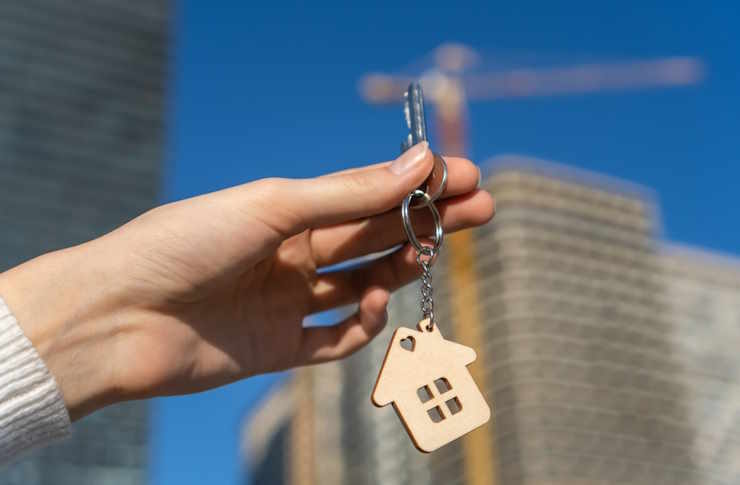Choosing the Right Prefab Home: A Lifestyle-Based Guide
Prefabricated homes have revolutionized the housing industry, offering a modern, efficient, and customizable alternative to traditional construction. As more people embrace this innovative approach to homeownership, understanding how to choose the right prefab home for your lifestyle becomes crucial. This guide will explore the various options available and help you navigate the decision-making process to find your perfect prefab home.

What Are Prefabricated Homes and How Do They Work?
Prefabricated homes, often called prefab homes, are houses manufactured off-site in a factory setting and then transported to the building location for assembly. This construction method offers several advantages over traditional on-site building, including reduced construction time, improved quality control, and often lower costs. Prefab homes come in various styles and sizes, from compact modular units to expansive custom designs, catering to diverse lifestyle needs and preferences.
What Are the Key Benefits of Choosing a Prefab Home?
Opting for a prefabricated home comes with numerous advantages that appeal to modern homeowners:
-
Faster Construction: Prefab homes can be built in a fraction of the time required for traditional homes, as factory construction occurs simultaneously with site preparation.
-
Consistent Quality: Factory-controlled environments ensure higher precision and quality standards, reducing the risk of weather-related delays or on-site errors.
-
Cost-Effectiveness: Streamlined production processes and reduced on-site labor often result in lower overall costs compared to traditional construction methods.
-
Eco-Friendly: Prefab construction typically generates less waste and can incorporate sustainable materials and energy-efficient designs more easily.
-
Customization: Contrary to popular belief, many prefab homes offer extensive customization options to suit individual tastes and needs.
How Do You Assess Your Lifestyle Needs for a Prefab Home?
Choosing the right prefab home starts with a thorough assessment of your lifestyle and needs:
-
Space Requirements: Consider your family size, potential growth, and how you use living spaces. Do you need multiple bedrooms, a home office, or open-plan living areas?
-
Location: Think about where you want to live and how the prefab home will fit into the surrounding environment. Some designs may be better suited for urban settings, while others excel in rural landscapes.
-
Energy Efficiency: If sustainability is important to you, look for prefab homes with high energy efficiency ratings and eco-friendly features.
-
Aesthetic Preferences: Prefab homes come in various architectural styles, from ultra-modern to traditional. Choose a design that resonates with your personal taste and complements your lifestyle.
-
Budget: Determine your budget, keeping in mind that while prefab homes can be cost-effective, prices vary based on size, customization, and finishes.
What Are the Different Types of Prefab Homes Available?
Understanding the various prefab home options is crucial for choosing the right one for your lifestyle:
-
Modular Homes: These are built in sections (modules) and assembled on-site. They offer flexibility in design and can be suitable for various lot sizes.
-
Panelized Homes: Constructed using pre-made wall panels, these homes offer a balance between customization and efficiency.
-
Kit Homes: These come as a set of pre-cut and numbered materials, ideal for those who want a more hands-on building experience.
-
Manufactured Homes: Fully constructed in a factory and transported whole to the site, these are often more affordable but may have size limitations.
-
Shipping Container Homes: Repurposed shipping containers offer a unique, eco-friendly option for those seeking a modern, industrial aesthetic.
How Do You Compare Prefab Home Providers and Costs?
When selecting a prefab home provider, it’s essential to compare options and understand the associated costs. Here’s a comparison of some popular prefab home providers:
| Provider | Home Types | Price Range (USD) | Key Features |
|---|---|---|---|
| Blu Homes | Modular | $200,000 - $1,000,000+ | Eco-friendly designs, high-end finishes |
| Method Homes | Modular, Panelized | $300,000 - $1,500,000+ | Custom designs, LEED certification options |
| Clayton Homes | Manufactured, Modular | $100,000 - $500,000+ | Wide range of styles, affordable options |
| Plant Prefab | Modular, Panelized | $250,000 - $1,200,000+ | Sustainable materials, smart home technology |
| Deltec Homes | Panelized | $200,000 - $800,000+ | Round home designs, hurricane-resistant options |
Prices, rates, or cost estimates mentioned in this article are based on the latest available information but may change over time. Independent research is advised before making financial decisions.
When comparing providers, consider factors such as design flexibility, energy efficiency ratings, warranty offerings, and the level of customization available. It’s also important to factor in additional costs such as land purchase, site preparation, and utility connections, which can significantly impact the overall budget.
How to Make Your Final Decision on a Prefab Home
After assessing your lifestyle needs, exploring different prefab options, and comparing providers, making your final decision involves:
-
Visiting Model Homes: If possible, tour model homes or completed projects by your shortlisted providers to get a feel for the quality and design.
-
Reviewing Contracts Carefully: Understand what’s included in the package and what additional costs you might incur.
-
Checking References: Speak with previous clients of the prefab company to gauge their satisfaction and experience.
-
Considering Future Needs: Choose a design that can accommodate potential lifestyle changes or family growth.
-
Evaluating Financing Options: Some lenders specialize in prefab home financing, which may offer better terms for this type of construction.
Choosing the right prefab home for your lifestyle involves careful consideration of your needs, budget, and the available options. By understanding the benefits, assessing your requirements, and thoroughly researching providers, you can make an informed decision that results in a home that perfectly suits your way of life. With the right approach, a prefab home can offer a blend of efficiency, sustainability, and personalized design that traditional construction methods may struggle to match.




